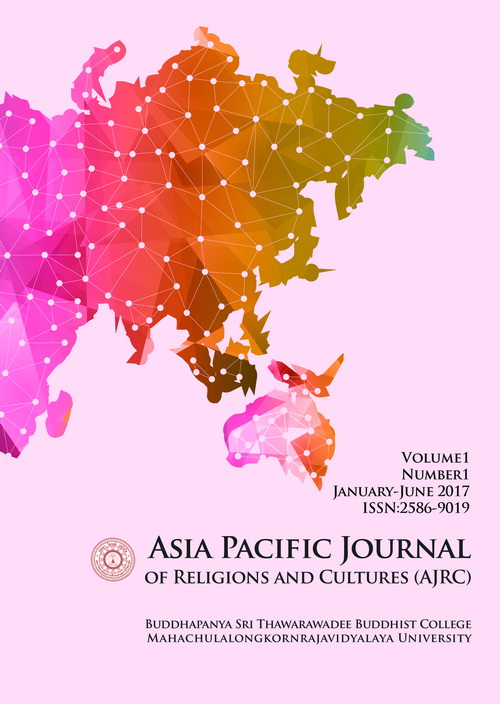The Notion of Investigation (Vicaya) in Buddhism
Main Article Content
Abstract
Buddhism is an investigation-introduced religion. It emphasizes the investigation. This article concerns itself with the notion of investigation (vicaya) in Buddhism. The goal in this article is to give a satisfying account of (1) the Buddhist concept of investigations, (2) its methods and (3) purposes. It is mainly approached through the method of the textual studies of the Pāli canonical texts, including the utilizing of a Tibetan Buddhist text source such as Jñānasāra-samuccaya and some uddhist books, describing and analyzing the Buddhist notion on investigation (vicaya). The result of this article is to present a clearer and satisfied account of the Buddhist understanding of investigation (vicaya), its methods (ñāya) and purposes. It is also to cast important light on such problems as the unanalyzed phenomenon of investigation (vicaya) in Theravada Buddhism, its methods and purposes.
Article Details
References
Arnold C. Taylor. (ed.). (1905). Paṭisambhidāmagga, Vol. I. London: The Pali Text Society.
Arnold C. Taylor. (ed.). (1907). Paṭisambhidāmagga, Vol. II. London: The Pali Text Society.
Bodhi, Bhikkhu. (2000). The Connected Discourses of the Buddha (Saṃyutta Nikāya), Vol. I. Boston: Wisdom Publication.
Bodhi, Bhikkhu. (2012). The Numerical Discourses of the Buddha (Aṅguttara Nikāya). Boston: Wisdom Publications.
C. A. F. Rhys Davids. (1975). The Visuddhi – Magga of Buddhaghosa. London: The Pali Text Society.
Carpenter. (ed.). (1976). Dīgha Nikāya, Vol. III. London: The Pali Text Society.
Dines Andersen and Helmer Smith. (1913). Sutta – Nipāta. London: The Pali Text Society.
E. Hardy. (1902). Netti-Pakaraṇa. London: The Pali Text Society.
E. Hardy. (ed.). (1958). Aṅguttara Nikāya, Part V.. London: The Pali Text Society.
E. Hardy. (ed.). (1976). Aṅguttara Nikāya, Part III. London: The Pali Text Society.
Edward Muller. (ed.). (1885). Dhammasaṅgaṇi. London: The Pali Text Society.
Gethin, R. M. L. (2001). The Buddhist Path to Awakening: A Study of the Bodhi-Pakkhiyā Dhammā. Oxford: Oneworld Publications.
Gunaratana, Bhante. (2011). Mindfulness in Plain English. Boston: Wisdom Publications.
Herold, A. Ferdinand. (1954). The Life of the Buddha: According to the Legends of Ancient India. Tokyo: Charles E. Tuttle Company.
M. Leon Feer. (ed.). (1975). Saṃyutta Nikāya, Vol. III. London: The Pali Text Society.
M. Leon Feer. (ed.). (1976).Saṃyutta Nikāya, Vol. V. London: The Pali Text Society.
M. Leon Feer. (ed.). (1989). Saṃyutta Nikāya, Vol. II. London: The Pali Text Society.
Ñanamoli, Bhikkhu and Bodhi, Bhikkhu. (1995). The Middle Length Discourses
of the Buddha (Majjhima Nikāya). Kandy: Buddhist Publication Society.
Rhys Davids. (1904). Vibhaṇga. London: The Pali Text Society.
Richard Morris. (ed.). (1961). Aṅguttara Nikāya, Part I. London: The Pali Text Society.
T. W. Rhys Davids and Carpenter. (ed.). (1966). Dīgha Nikāya,Vol. II. London: The Pali Text Society.
Walshe, Maurice. (1995). The Long Discourses of the Buddha (Dīgha Nikāya). Boston: Wisdom Publication.


